In the bee world, Hornets are known for their no-nonsense, aggressive attitude. The Dodge Brand is known for having similar qualities in its vehicles, and that attitude shines through with the 2024 Dodge Hornet. For the past week, I learned the ins and outs of this car and found out firsthand what Dodge’s new flagship vehicle brings to the road.
I first learned about the Hornet from my father, Erich, an ex-SRT® vehicle dynamics engineer of 31 years, back in 2022. I remember first laying eyes on a Hornet on my drive home from the gym last year. My initial impression of the car is how interesting it looks. The Hornet embodies the aggressive stance and well-designed shape enthusiasts have come to expect from the brand. Its aerodynamic, curvy profile gives it a predatory look, reminiscent of a hornet ready to sting. The front fascia features a prominent grille placed between narrowed LED headlights. The curved hood and side skirts convey a sense of speed and agility. The rear of the car is accented by a rear spoiler and sleek light blade tail lights which remind me of those from the Aston Martin Vantage. What makes the rear spoiler interesting is how it is flanked by sharp, angular edges going down the rear window. These edges are not just for looks but functionality, making the car more aerodynamic and reducing drag.
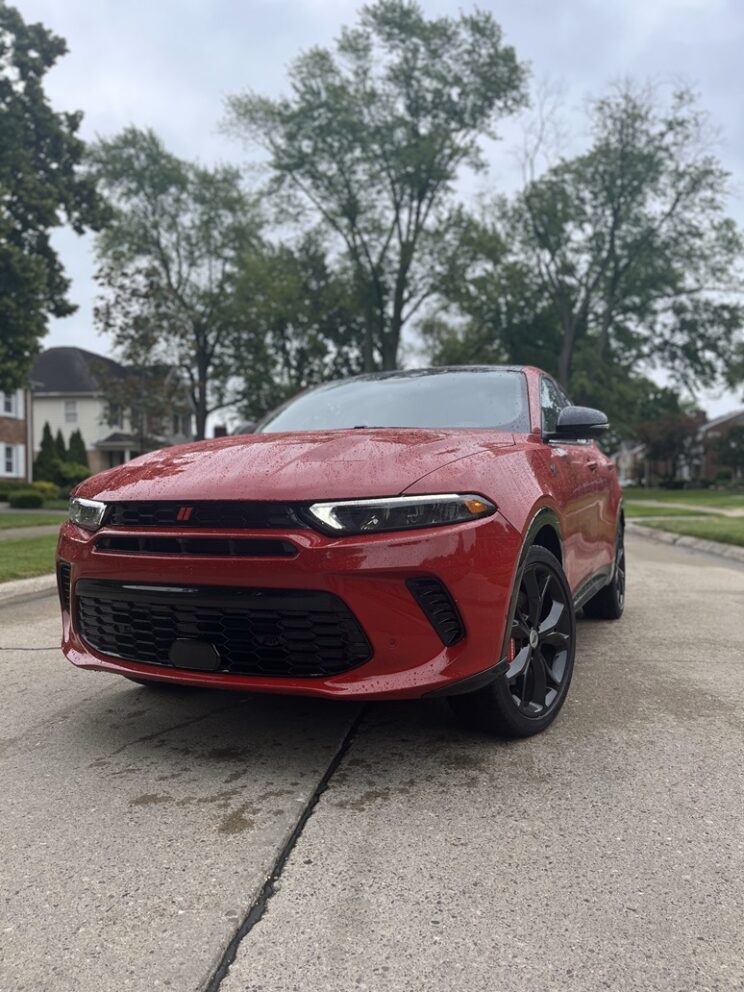
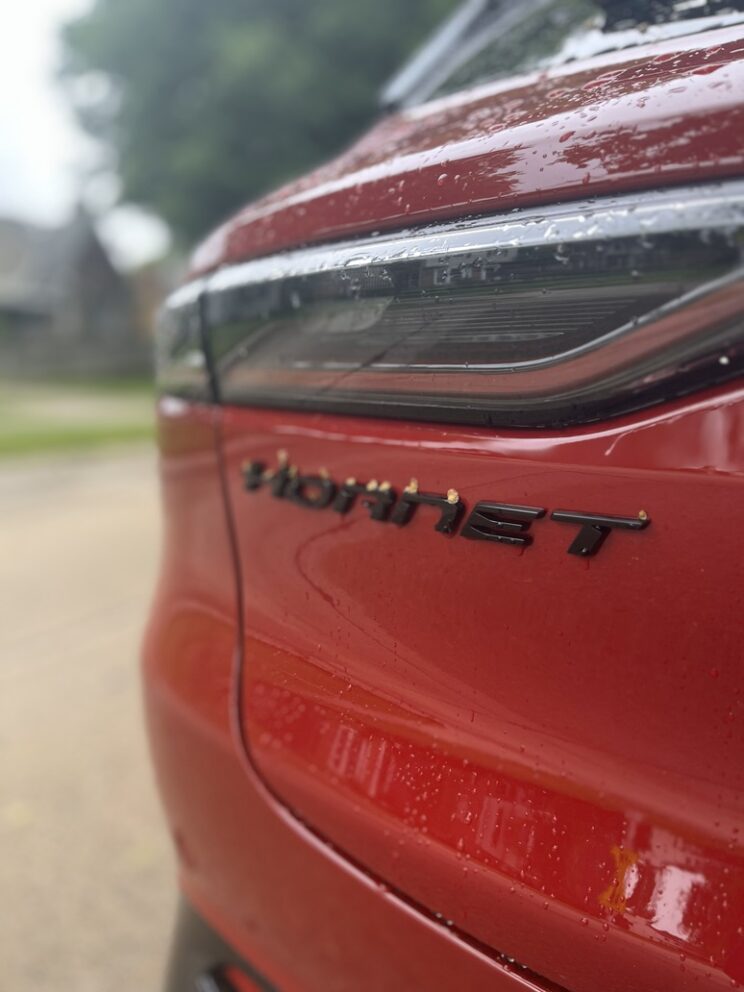
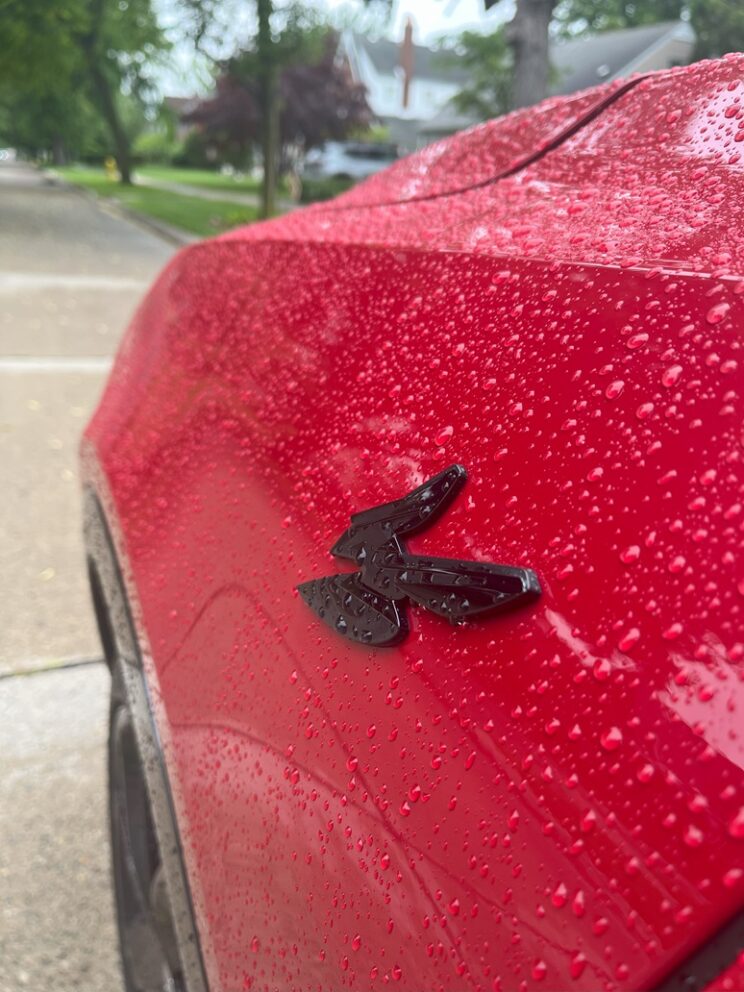
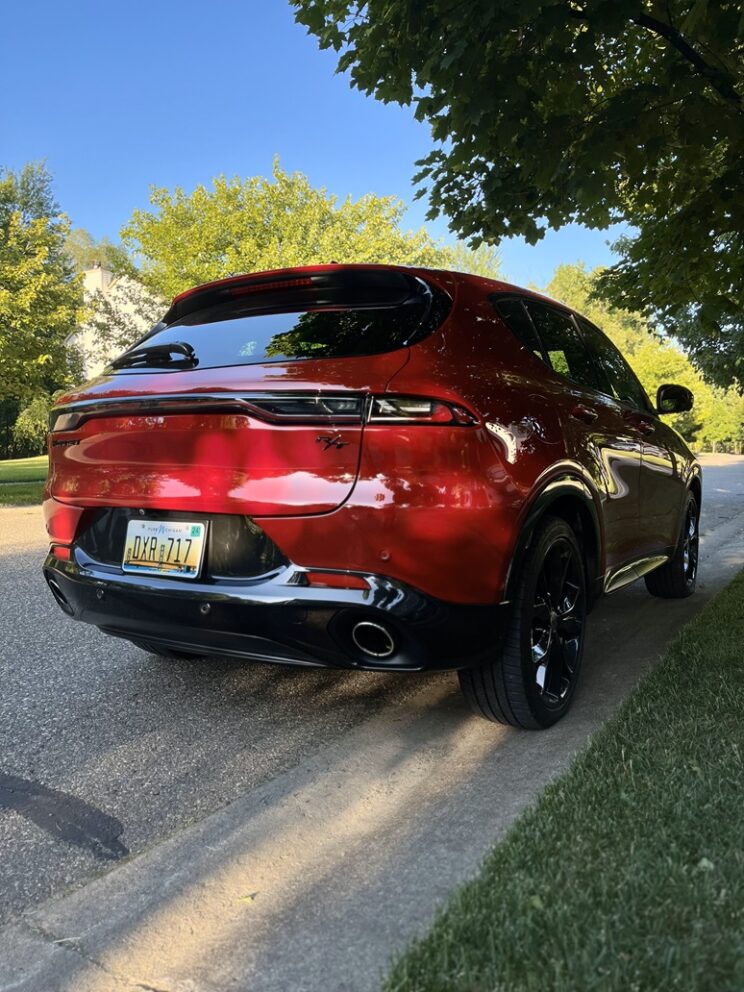
The design philosophy of the Hornet’s exterior is continued into the interior. When you step into the driver’s seat, the seats and steering wheel are the first to grab your attention. The seats are made using breathable leather, perfectly comfortable for daily driving. While driving, I noticed the seats feature pronounced bolstering that provides increased support ensuring you stay firmly in place in case of an aggressive maneuver. The steering wheel and dashboard are unmistakably driver centric. Almost all your driving controls are located directly on the three-spoked, squared-off steering wheel, reinforcing the idea this car is built for those who love driving.
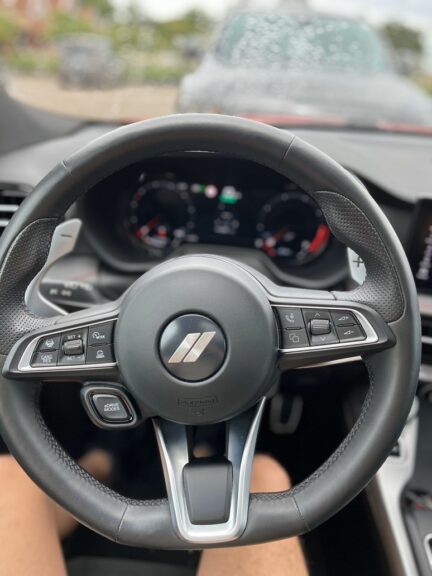
The steering wheel is the centerpiece of the Hornet’s interior. It’s wrapped in perforated leather for a firm, comfortable grip. It features a squared bottom design, giving it a sporty touch. The driving controls being located on the steering wheel with the exception of the turn signals, paddle shifters and engine start button, reminded me of my experience driving a 2017 Ferrari California Turbo. With the Ferrari, all the necessary driver controls, including the controls not on the Hornet wheel, are located on the steering wheel. The start button on the Ferrari is replaced with an e-drive button on the Hornet, which allows the driver to select one of three drive modes: electronic, hybrid and e-save. The paddle shifters are strategically placed behind the wheel, allowing the driver to use them no matter the level of driving aggression.
When it comes to the dashboard, I am impressed with the amount of information available to the driver. The digital instrument cluster offers customizable displays putting critical driving information at your fingertips. From the tachometer to the hybrid system’s energy flow indicators, every detail is presented with precision and clarity. The performance menu provides the driver with electronic turbo and torque gauges, to let you know how much fun you can have.
When it comes to the cabin, I noticed it’s about the same as a Jeep® Compass. It’s capable of seating five passengers comfortably. You can tell the interior is designed to cater to your senses, creating a driving environment that’s as comfortable on a long highway drive as it’s thrilling on a twisty back road.
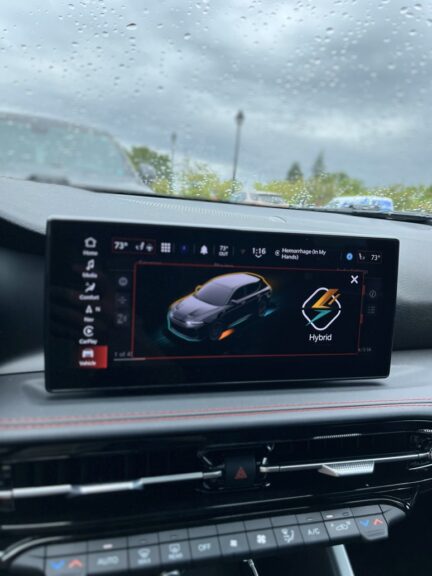
The driving experience with this car pleasantly surprised me. The Hornet Hybrid has a sport mode and three distinct electric driving modes: hybrid, electric and e-save. The car having these modes provided me with a driving experience that catered to whatever the journey called for. For normal cruising, the hybrid mode and the e-save modes have a similar feel. In both of these modes, the steering is a bit looser, and the suspension softens during casual driving. When driving normally, I noticed that the suspension and steering would tighten when making aggressive moves. It’s as if the car knows exactly how to be when you need it to be. While I was driving up north in hybrid mode, the car used the electric motor conservatively. On full charge, the electric motor has about 31 miles of range. This range barely burned down even after making a Dunkin run. This is impressive because other hybrids burn down the electric motor quickly, reducing the range.
From the three modes, I found driving in sport mode using the paddle shifters to be the most exhilarating. When activating sport mode, the suspension and steering firm up, giving off the impression that the car can be pushed to its limits. The throttle response sharpens, giving you the full power of the electric and gasoline motors combined. The paddle shifters in this mode are extremely responsive, making quick shifts effortless and almost instantaneous. When in sport mode, hitting both paddle shifters at the same time activates a boost from an increase in current from the battery to the rear motor, adding 30 extra horsepower. The battery can only be drained so quickly, making the boost last around 15 seconds. Even though the boost did not last long, it was fun to drive at its maximum horsepower. It’s safe to say sport mode is when you want to feel every bit of the Hornet’s power and dominate the open road. My experience with this car demonstrated that Dodge still has it. The brand still produces vehicles that are practical, well-designed and, above all, fun to drive.
Author: Dan Heuschele
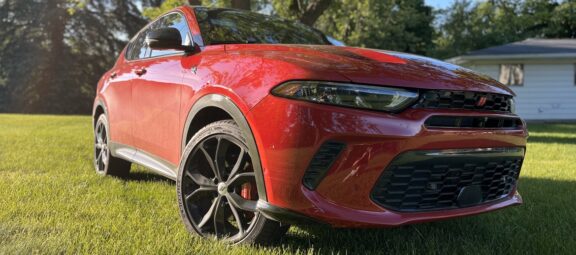
0 Comments